Place: Matera, via Moncenisio
Author: Ludovico Quaroni
Chronology: 1951 | 1953
Itinerary: Architecture for the community
Use: Church and facilities

The church is among the services provided by the Unrra-Casas residential villages’ building program. Located in the heart of La Martella village, on the top of a hill, it can be seen from afar.
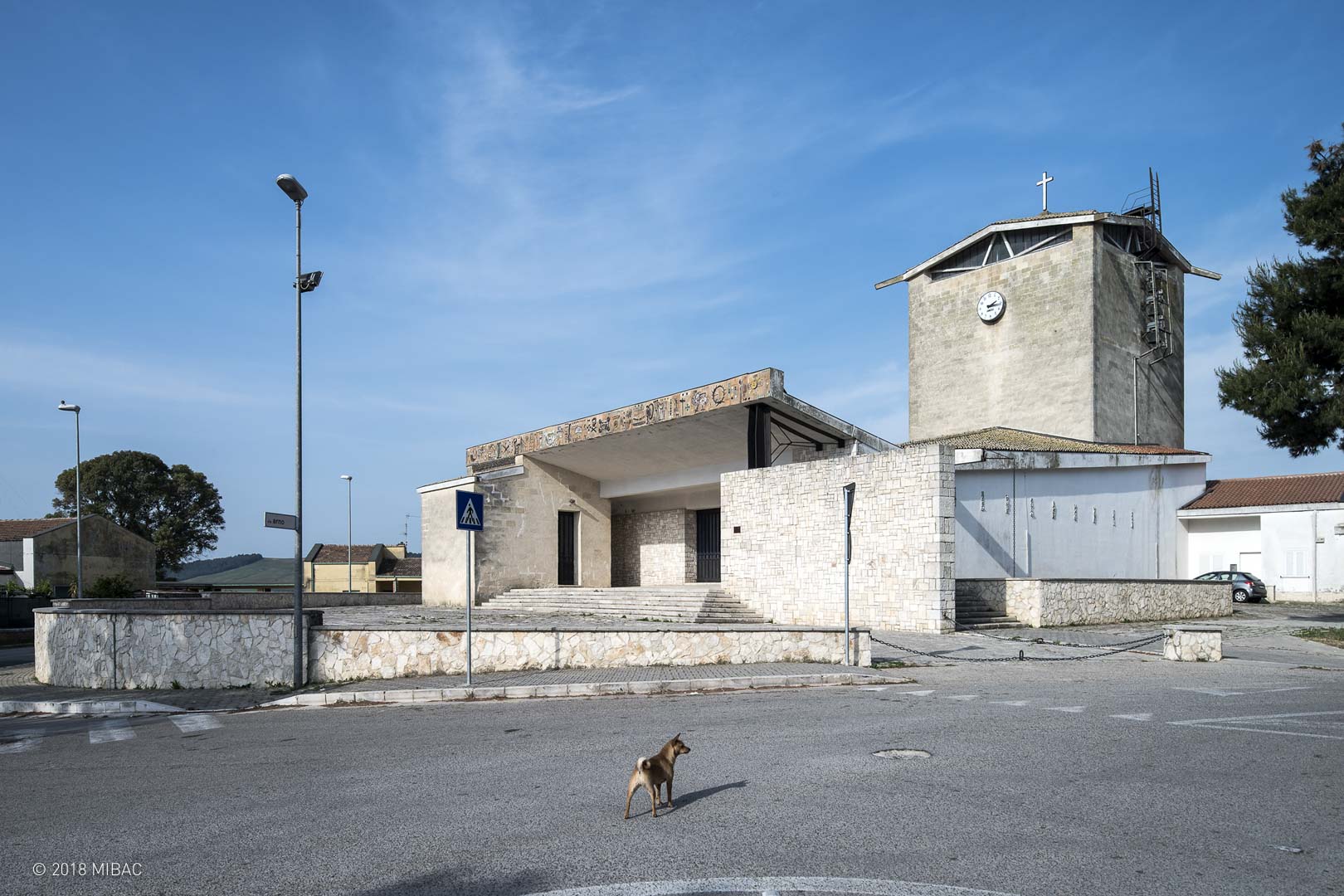
La Martella is the first example of Quaroni’s religious architecture designs. The Roman architect articulates the church, distinguishing the hall from the presbytery. The first is inside a low structure that extends to the public space, forming a covered porch. The second is a vertical volume with a square plan, also serving as the bell tower.
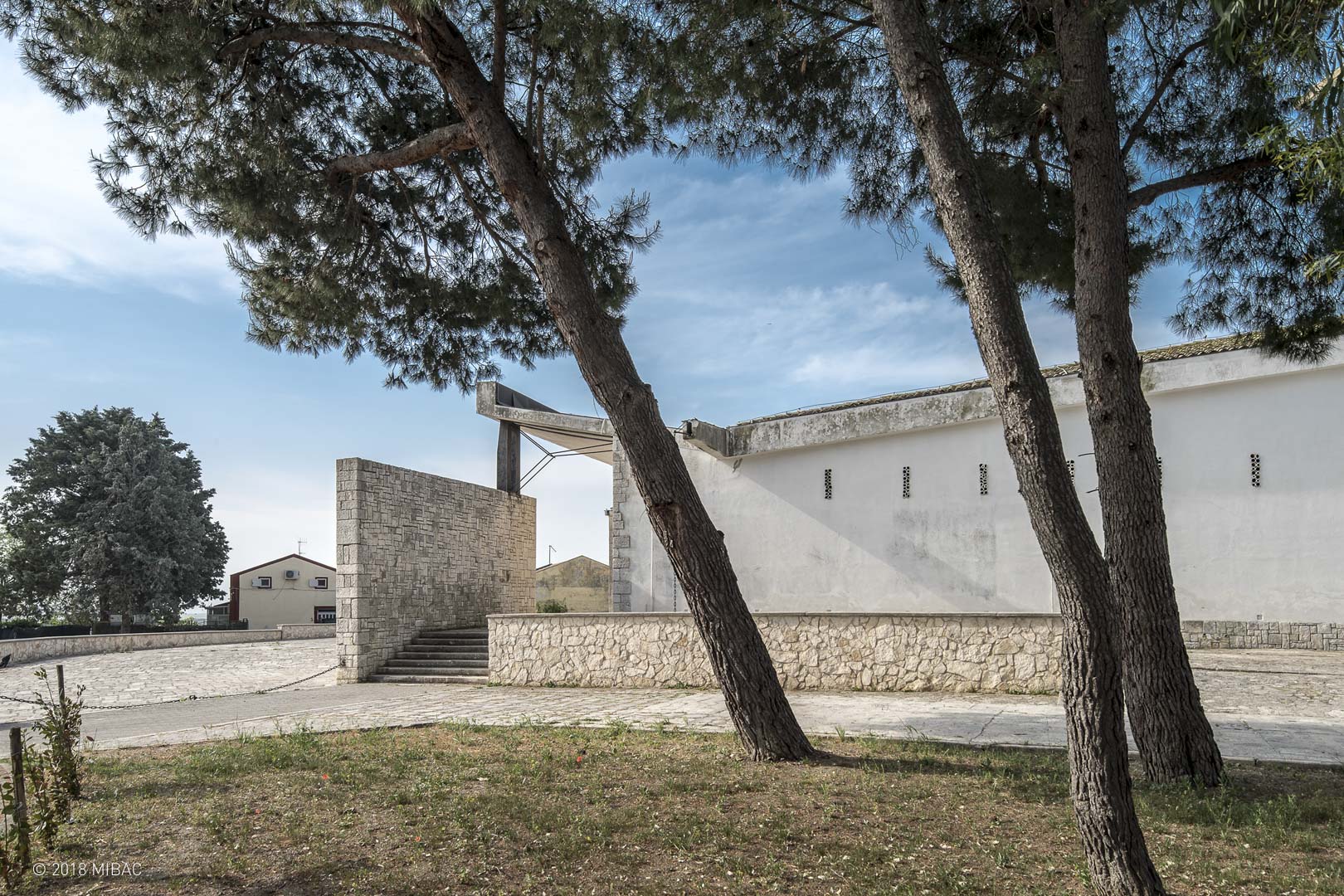
Like the rest of the village, the exterior is defined by a poor language typical of neorealism. It is characterized by the use of few materials: white plaster characterizes the side fronts; the opus incertum, used in the wall that supports the portico and in the basement line.
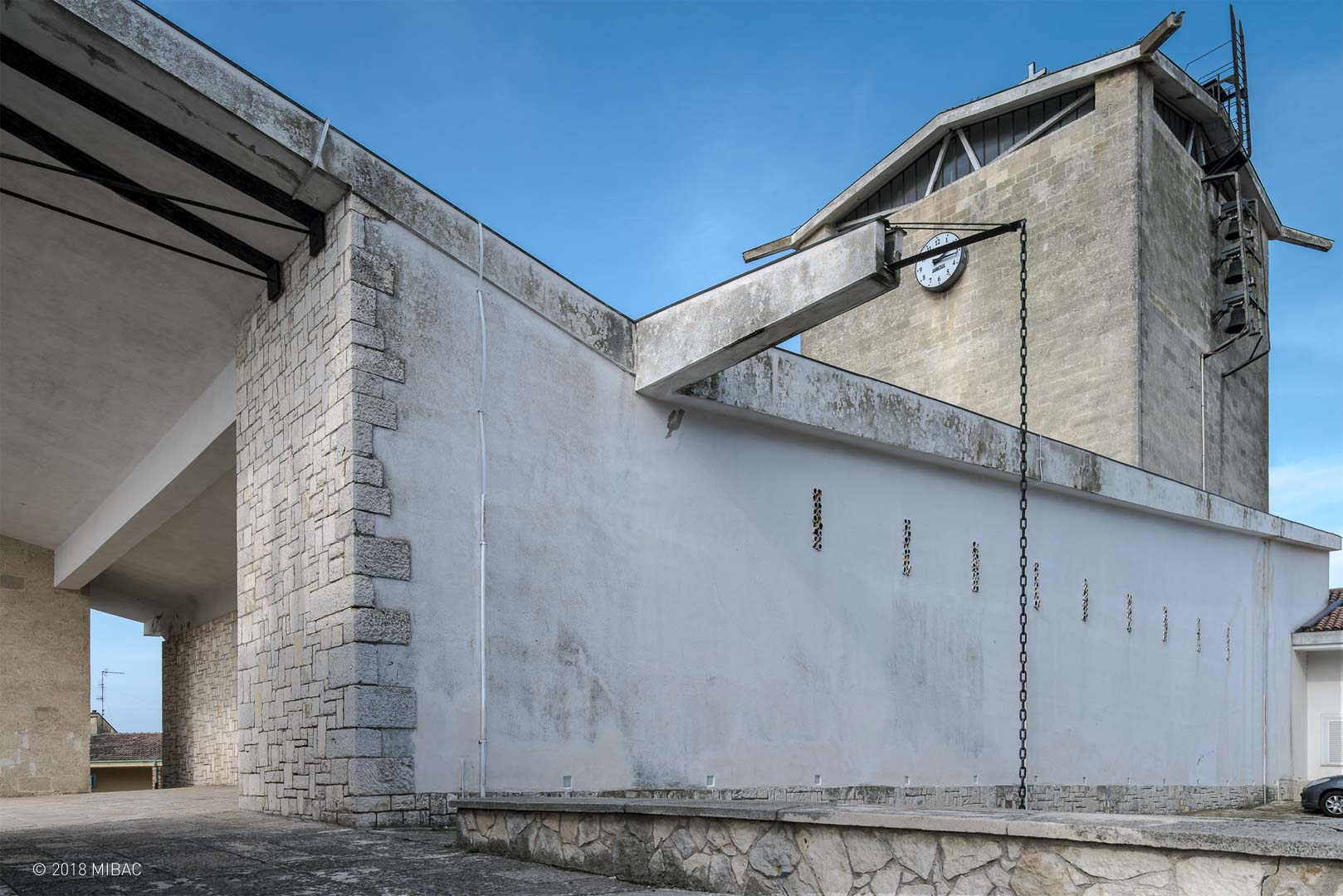
The picture above shows the clear juxtaposition between the low volume of the hall and the vertical volume of the bell tower. The latter resembles a granary, and, with its 20 meters stands out from the hall structure. It also differs in the material, being built of tuff blocks.

Three large staircases lead from the street to the porch, then to the nave. The stairs, arranged on three sides of the churchyard, open towards the village, clearly intending to rooting the church in its surroundings.
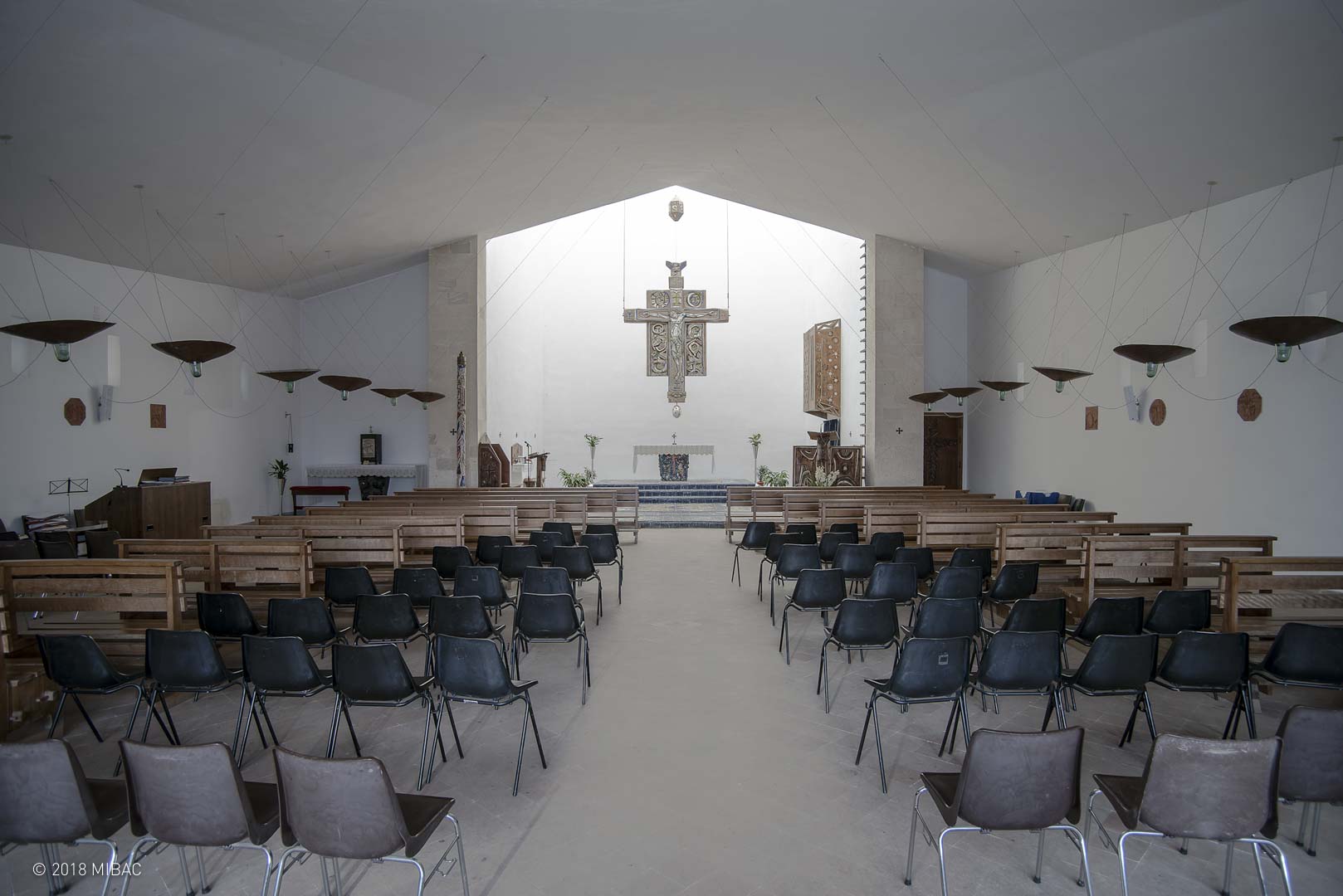
Inside, the distinction between the hall and the tiburium is evident. The hall is dedicated to the faithful, with a more compressed dimension. It is covered by a three-pitched roof that directs the eye towards the altar. It reflects the exterior’ essential and poor style with whitewashed walls and no decorations or openings except for the central door, screened by a blue curtain.

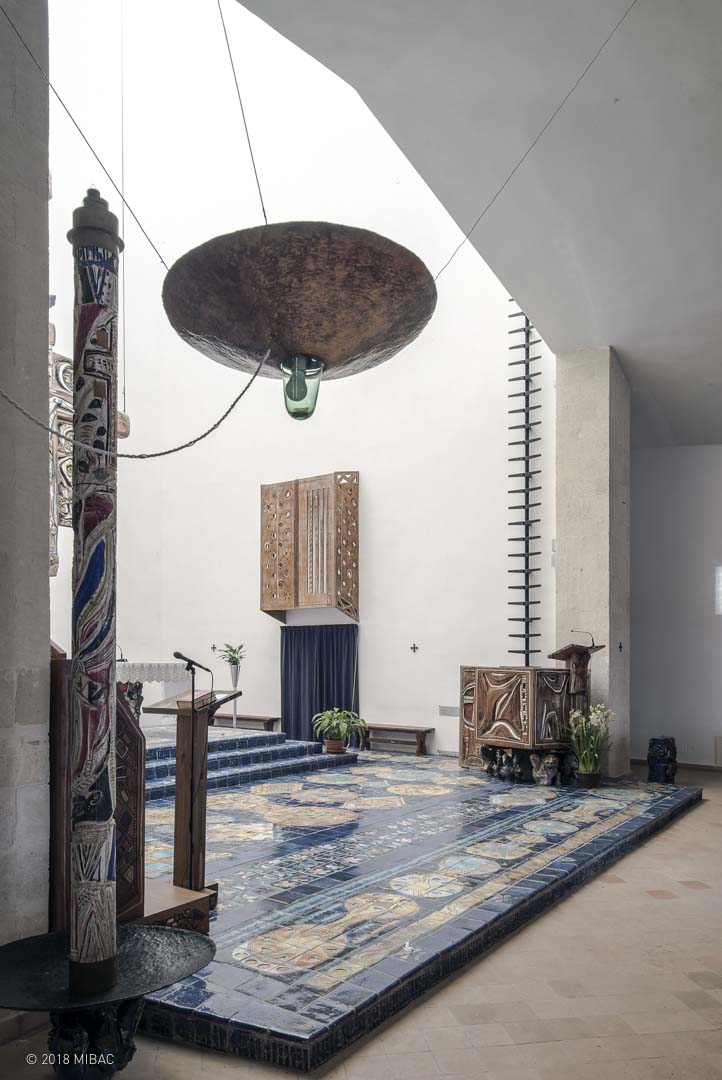
The presbytery develops vertically, flooded with light from above. In the center, the crucifix, sculpted by Giorgio Quaroni, is suspended above the altar.
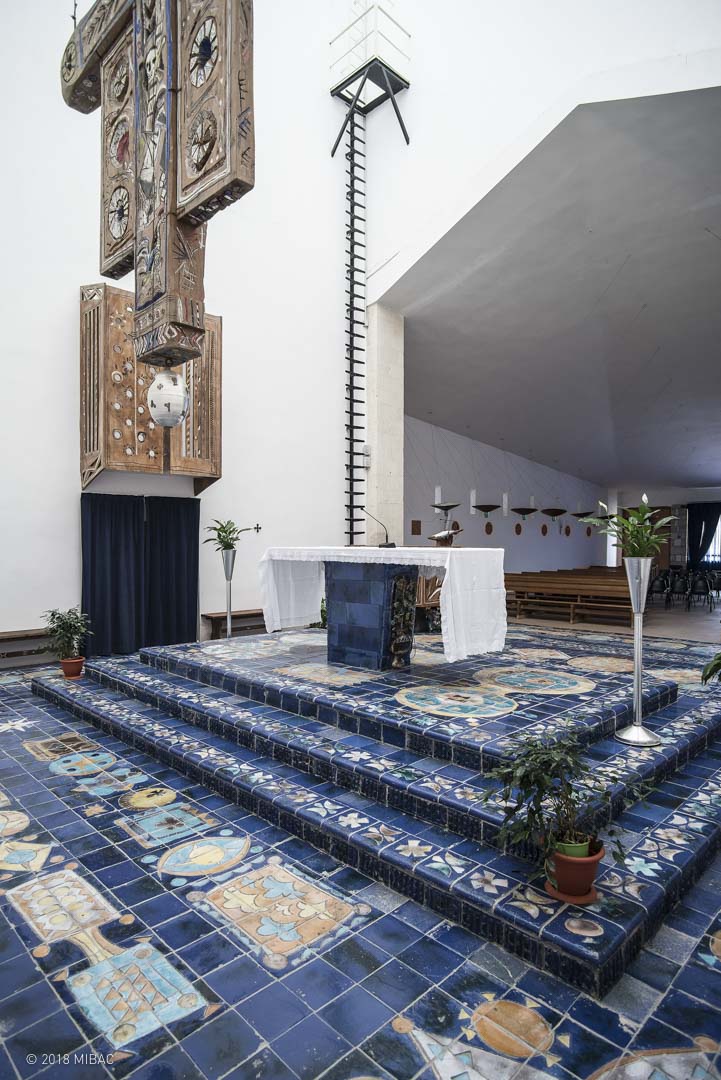
The altar is entirely covered with majolica ceramics painted by Pietro Cascella

